What is the ipo cost and ipo charges for listing on NSE and BSE Exchange
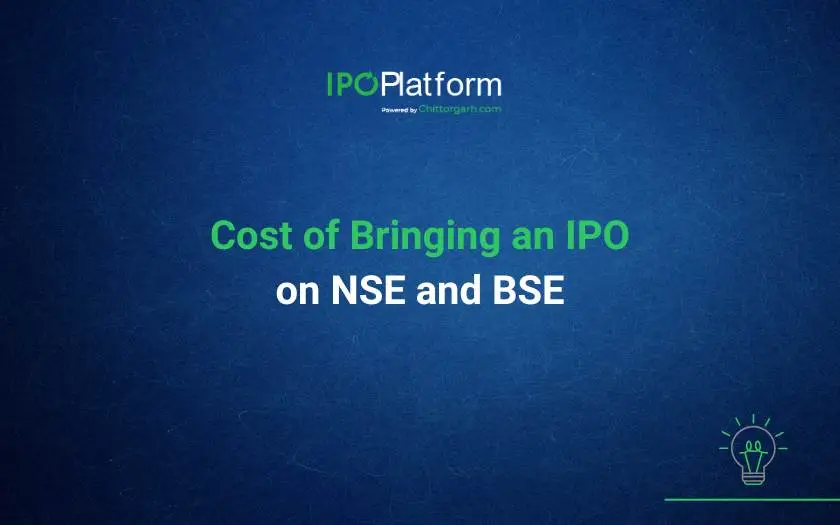
Initial Public Offer means inviting public to invest in the company for the first time; IPO in India is regulated by SEBI ICDR Regulations and SEBI LODR Regulations. Making a company public has many benefits and at the same time involve various costs and responsibilities towards investors and post listing compliances making it crucial to understand the cost attached with the IPO.
IPO Process requires meticulous planning and coordination among various intermediaries, including underwriters, legal advisors, auditors, investors, regulators, and stock exchanges. Each of these intermediaries contribute to the overall expense of the IPO. Many factors affect the IPO cost for an Indian company, so let’s understand these IPO expenses which is critical for budgeting and ensuring a smooth IPO process.
A company can go public by listing on either NSE Emerge or BSE SME or mainboard platform of NSE and BSE. A company can become eligible by fulfilling the SME IPO eligibility Criteria as laid down in SEBI ICDR Regulations. Here, we have covered the IPO cost for both listing on SME platform or Mainboard IPO.
Introduction to IPO Expenses
IPO expenses refer to the costs incurred by a company while going public. These expenses are broadly classified into
Fixed costs
These costs are generally referred to as IPO process driven cost for the promoters that would involve a payout in four or five instalments starting upon the signing of the mandate. The instalments fall due on completion of a certain part of IPO process as would be mentioned in the mandate. This cost can also be termed as out of pocket cost for the promoter. Being a process driven cost, this type of cost usually remains similar for the merchant bankers. It falls in the nature of fixed cost as it remains similar regardless of the IPO size though it may vary on a case to case basis.
Following are the costs which form part of IPO process cost
-
Merchant Banking fee
Merchant banking costs are one of the largest components of IPO expenses. These costs form half of the total fixed cost of the IPO. These costs include fees paid to the Book Running Lead Managers (BRLMs) or merchant bankers in India involved in managing the IPO process. This fee usually covers the services offered by the merchant banker towards IPO process.
The merchant banking fee encompasses various crucial services provided by the merchant banker during the public offering process. This includes drafting the offer document, which requires meticulous preparation to ensure compliance with regulatory standards and provide clear, accurate information to investors. Due diligence is another key component, involving a thorough review of the Issuer's financials, operations, and legal standing to identify and mitigate potential risks. Additionally, the merchant banker is responsible for coordinating with intermediaries such as stock exchanges, registrars to the issue (RTA), and depositories, ensuring seamless communication and alignment throughout the process. These activities are vital for the successful execution of the offering.
Tentative Cost ₹ 25 - ₹ 30 Lakhs.
-
Legal and Regulatory Costs
Regulatory fees are primarily those kind of fee which needs to be paid to the Regulator, BSE or NSE, Registrar (RTA) and Depositories for its services offered under SEBI compliance requirements, and other regulatory filings.
Regulatory Fee includes:
- Depository Cost (CDSL and NSDL)- There are two depositories in India – National Securities Depository Limited (NSDL) and Central Depository Services (India) Limited (CDSL). These depositories offer Demat account to hold securities to assist in the trading of securities. This fee is usually collected by the depository participants who are usually the stock brokers. Brokerage firms like Zerodha, Groww, 5 paisa, Angel One, Upstox are some of the best brokers in India who act as Depository Participants (authorised partner of NSDL and CDSL). NSDL and CDSL fee are same for all the customers, however different brokers charge different demat charges as they add their own fee on top of the depository charges.
- Exchange and Listing Fee- Companies must pay initial and annual fees to list on platforms like the Bombay Stock Exchange (BSE SME) or National Stock Exchange (NSE Emerge).
What is the listing fee on NSE Emerge?
|
Particulars |
Amount (In Rs) |
|
Processing Fees (Applicable at the time of In-Principle Application) |
₹ 25,000 |
|
Initial Listing Fees
(Applicable at the time of Final Listing Application) |
₹ 50,000 Or 0.01% of Issue Size (whichever is maximum) |
|
Annual Listing Fee (Applicable from subsequent financial year post listing) |
0.02% of the full market capitalization as on March 31,XXXX |
What is the listing fee on BSE SME platform?
|
Particulars |
Amount |
|
Processing Fees (Applicable at the time of In-Principle Application) |
₹ 50,000 |
|
The Annual Fees |
₹ 25,000/- or 0.01% of full market capitalization, whichever is higher. |
Other Exchange related Expenses-Some of the other charges on the relevant Exchange include Book Building Software charges, Listing fees, Processing fees etc.
-
RTA (Registrar Transfer Agent) Cost- Registrar and Transfer Agents (RTA)are SEBI-registered entities; during an IPO they are responsible for the following
- Maintaining a proper record of the applications received from the investors.
- Basis of allotment in consultation with the Stock Exchange.
- Finalising the allotment list.
- Processing and dispatching the allotment letters.
- Initiating refunds for non-allotments.
- Certificates and other related documents regarding the Issue.
- RTA estimated cost is around ₹ 1 L- ₹ 2 L.
Total Regulatory Fee Tentative cost: ₹5 Lakhs to ₹ 15 Lakhs, depending on the listing platform, complexity and scale.
-
Peer Review Audit and other Audit expenses
Auditing and financial reporting are integral to building investor confidence. Indian companies must prepare their financial statements as per Indian Accounting Standards (Ind AS). There is a requirement of Statutory audit, restatement of financials and Peer review audit for IPO and listing purposes. A company has to involve various intermediaries like a practising Chartered Accountants and a verified Peer Review Auditor. Their role involves
- Key Activities:
- Conducting statutory audits.
- Reconciling past financial data with current regulations.
- Addressing audit-related queries raised during the due diligence process.
- Preparation of restated financials.
- Peer Review Audit
- Financial Due diligence
Accounting, auditing cost and cost of restated financials are higher for companies with lengthy operating histories or complex financials.
Tentative Cost ranges from ₹ 2L – ₹ 5L.
-
Printing and Distribution Costs
Printing and Distribution cost includes the cost of printing offer documents (e.g., prospectus like DRHP, RHP) and other marketing materials.
Components:
- Designing and printing of different prospectus and other Issue related material like business pitch deck of the Issuer.
- Publish and circulate advertisements related to IPO like Pre-IPO and Post IPO.
- Disseminating the offer documents to Investors, designated Stock exchanges BSE SME or NSE Emerge, and Regulatory bodies.
However, with increasing digitization, companies might plan accordingly to reduce the printing costs by leveraging online platforms for distribution.
Tentative Cost: ₹ 3L– ₹ 6L
Marketing and Roadshow Expenses
Marketing and roadshows play a pivotal role in generating investor interest and ensuring the success of an IPO. These campaigns include physical events, digital advertisements, and media coverage. This process or activity is usually undertaken by the Merchant bankers by hiring some external PR agencies. Marketing helps in creating awareness about an upcoming IPO amongst the Investors. Roadshows and marketing helps to reach the QIBs and institutional investors.
Activities:
- Conducting roadshows in major financial hubs like Mumbai, Delhi, and Bengaluru.
- Engaging with institutional investors and retail participants.
- Utilizing media campaigns to promote the IPO.
Tentative cost ranges from ₹ 5L – ₹ 10L.
-
Miscellaneous Expenses
These include broking charges, Bank charges, administrative overheads etc.
Tentative Cost: ₹ 1Lakh – ₹ 5Lakh
- Components:
- Engaging with public relations agencies.
- Additional technology investments for transparency and efficiency.
Variable cost:
Variable cost are IPO expenses that are dependent on the scale of funds raised or vary with the IPO size. Higher the IPO size, higher are the below cost:
-
Underwriting Fees
Underwriting fees is one of the most significant components of IPO expenses. This fee is a variable cost charged as a percentage of the total funds raised in India. 100% underwriting is compulsory in case of SME IPO and a SME IPO merchant banker has to underwrite 15%. Rest 85% is underwritten by other parties which may include more than one party.
An underwriter can be a Syndicate Member(s) who are intermediaries registered with SEBI / registered as brokers with NSE and eligible to act as Underwriters. The Syndicate Member(s) will be appointed by the BRLM and Co-Lead manager or BRLM if any.
Hence, an underwriting agreement is entered into either between two or three parties (Issuer, merchant banker and the other underwriters).
In Summary, Underwriters also assist in pricing the IPO, underwriting the shares, and ensuring the fund raise from the investors. Underwriters, usually investment banks, charge fees for facilitating the IPO process.
-
Fund Raise cost
Fundraising cost, in the context of an IPO of Company, refers to the expenses incurred by Issuer company to complete the IPO process and attract institutional investors successfully. This is a success fee which means it’s not an upfront cost. The cost typically includes:
- Marketing and promotion of IPO and reaching out to the investors.
- Business research and analysis cost
- Other digital marketing cost
Typically, this cost will vary upon case to case basis.
Tentative underwriting and merchant banking cost- ranges from 8-10% of Issue Size of the company.
-
Other Intermediary Costs
Many companies take the service of intermediaries like IPO Advisors to smoothen the IPO process and also for IPO readiness. Involvement of consultants is voluntary but many companies prefer these advisors as they make the process systematic and the promoter can focus on scaling the business while the IPO is handled by Advisors. IPO Advisory cost may range from 0.5%-1% of the Issue size.
Hence SME IPO cost or IPO expenses can be summarised below in a summary.
|
Particular |
Amount |
|
Merchant Banking Fee |
₹ 25 to ₹30 Lakhs |
|
Underwriting and fund raise cost |
8 -10% of Issue Size |
|
Legal and Regulatory Costs (RTA cost and Listing Fee of Exchange) |
₹5 Lakhs to ₹10 Lakhs |
|
Peer Review Audit Costs |
₹ 2 Lakhs to ₹ 5 Lakhs |
|
Printing and Distribution Costs |
₹ 3 lakhs to ₹ 6 lakhs |
|
Marketing and Roadshow Expenses |
₹ 5 lakhs to ₹ 10 lakhs |
|
Miscellaneous Expenses |
₹ 2 Lakhs to ₹ 5 Lakhs |
It should be noted that some costs like peer review audit, marketing expenses depend on the kind of intermediaries selected for the IPO and hence it may vary on case to case basis.
What is the difference between SME IPO cost and Mainboard IPO cost?
|
Particulars |
Cost of SME IPO |
Cost of Mainboard IPO |
|
SEBI Fee |
No Requirement |
Max: ₹ 2,50,00,000 (Refer details) |
|
Exchange Initial listing fee (applicable at the time of final listing application) |
NSE Emerge- ₹ 50,000 or 0.01% of Issue Size whichever is maximum |
NSE- ₹ 50,000 |
|
Processing fee payable at the time of in principal approval |
NSE Emerge- ₹ 25,000 |
Covered in the SEBI Fee |
|
Annual listing fee (applicable form subsequent FY post listing) |
NSE Emerge-0.02% of market capitalization as on 31st March xxxx. |
NSE-Max: ₹ 12,20,000 (refer details) |
|
Merchant Banking Fee |
₹ 25L - ₹ 30L |
₹ 3crore - ₹ 5crore |
|
Fund Raise and Underwriting Cost |
8-10% of Issue size |
2-6% of the Issue Size and underwriting is not compulsory in mainboard IPO |
What is the IPO Cost of listing on Mainboard platform?
Fee payable at the time of filing offer document with SEBI, following fee is applicable for Mainboard companies.
In respect of every draft offer document (DRHP), offer document in case of a fast track issue and draft letter of offer as also in cases of updation of any draft offer document, fees at the rate as specified below, shall be payable to the Board.
The fees shall be paid in advance by way of direct credit in the Board’s bank account through NEFT/RTGS/IMPS or [online payment using the SEBI payment gateway or any other mode as may be specified by the Board from time to time]
MainBoard Public Issue Cost (SEBI fee, both for NSE and BSE)
|
Size of the issue, including intended retention of oversubscription |
Amount / Rate of fees |
Amount / Rate of fees for filing within one year after expiry of SEBI Observation letter |
|
Less than or equal to ₹ 10,00,00,000. |
A flat charge of ₹ 1,00,000 |
A flat charge of ₹ 50,000 |
|
More than ₹ 10 crores but less than or equal to ₹ 5000 crores |
0.1 per cent. of the Issue size. |
0.05 per cent of the Issue size. |
|
More than ₹ 5000 crores |
₹ 5,00,00,000 plus 0.025 per cent. of the portion of the Issue size in excess of ₹ 5000 crores. |
₹ 2,50,00,000 plus 0.0125 per cent. of the portion of the Issue size in excess of ₹ 5000 crores. |
If there is any updation or change in the Offer Document, following fee is applicable:
|
Updations or change in any of the sections of the Offer Document |
₹ 10,000 for updations or changes per section subject to total fee not exceeding 1/4th of the filing fee paid at the time of the document with SEBI or ₹ 50,000 whichever is higher. |
What is the IPO cost for listing on Mainboard platform (NSE)?
|
Exchange Initial Listing Fee
|
₹ 50,000 (at the time of listing application ) |
|
Annual Listing Fees based on paid up capital |
|
|
Upto ₹100 crore |
₹ 3,00,000 |
|
Above ₹100 Crore and upto ₹200 Crore |
₹ 3,80,000 |
|
Above ₹200 Crore and upto ₹300 Crore |
₹ 4,90,000 |
|
Above ₹300 Crore and upto ₹400 Crore |
₹ 5,95,000 |
|
Above ₹400 Crore and upto ₹500 Crore |
₹ 7,30,000 |
|
Above ₹ 500 crore and upto ₹ 1000 crore |
₹7,35,000/- and an additional listing fees of ₹4,800/- for every increase of ₹ 5 crore or part thereof in the paid up share |
|
Above ₹ 1000 Crore |
₹ 12,20,000/- and an additional listing fees of ₹5,125/- for every increase of ₹5 crore or part thereof in the paid up share |
AND
Fee Structure based on market capitalization
|
*Incremental Fee shall be levied for listed companies with market capitalization above ₹2500 crores as follows - ₹4000 per ₹1000 Crores |
|
*The incremental fee due to market capitalization is capped at ₹15 lakhs (excluding the component towards paid up capital) |
|
*For the purpose of this computation, Market Capitalization shall be deduced as follows: |
|
What is the IPO cost for listing on Mainboard platform (BSE)?
|
Exchange Initial Listing Fee |
₹ 20,000 (at the time of listing application |
|
Annual Listing Fees based on paid up capital |
|
|
Upto ₹100 crore |
₹ 3,25,000 |
|
Above ₹100 Crore and upto ₹200 Crore |
₹ 3,60,000 |
|
Above ₹200 Crore and upto ₹300 Crore |
₹ 4,65,000 |
|
Above ₹300 Crore and upto ₹400 Crore |
₹ 5,65,000 |
|
Above ₹400 Crore and upto ₹500 Crore |
₹ 6,95,000 |
|
Above ₹ 500 crore and upto ₹ 1000 crore |
₹.7,00,000/- and an additional listing fee of ₹ 4,560/- for every increase of ₹ 5 crores or part thereof above 500 crores in the paid up share capital. |
|
Above ₹ 1000 crore |
₹ 11,60,000/- and an additional listing fee of ₹ 4,870/- for every increase of ₹ 5 crores or part thereof above 1,000 crores in the paid up share capital. |
AND
Annual Listing Fee based on market capitalization
|
*Incremental fees for listed companies with market capitalization above ₹ 2,500 crore at ₹ 5,000/- per ₹ 1000 crore. |
|
*The above incremental fee due to market capitalization is capped at ₹ 20 Lakhs (excluding the component towards paid-up capital) |
|
*For this computation, market capitalization is calculated as follows: |
|
(i) Monthly average market capitalization = Highest market capitalization during the month and lowest market capitalization during the month |
|
(ii) Average of the above for the twelve months preceding the invoicing date. |
Please note that Applicable taxes would be levied on the above cost amount.
Is there any difference in the IPO cost in Book Building IPO and Fixed price IPO?
The Book Building method and the Fixed Price method are primarily the IPO types that an Issuer decides along-with merchant banker. Here is a brief on the book building type IPO and Fixed price type IPO.
- In the Book Building method, a price band is set for the shares. Investors then place their bids within this range based on their understanding and analysis of the worth of the shares. The final price is decided based on the demand. The price band can’t be more than 20% higher or lower than the starting (floor) price.
- In the Fixed Price method, the merchant banker sets a fixed price for the shares right from the start. There’s no price range or bidding involved.
The cost of both methods is nearly the same, but the Book Building method has some extra regulatory charges for the process handled by the stock exchange.
What are the Factors affecting IPO Cost?
The cost of an IPO (Initial Public Offering) can vary depending on several factors. Here are the key ones:
Company Size and Valuation: Larger companies or those with higher valuations may face higher IPO costs due to more extensive legal, regulatory, and marketing requirements.
Market Conditions: Favourable market conditions may reduce some costs due to easier investor engagement, while challenging market environments may require additional marketing or strategic adjustments.
Marketing and Roadshows: The need to promote the IPO through roadshows, investor meetings, and advertising can drive costs higher, especially for companies targeting global investors.
Complexity of Offering: Factors such as the number of shares issued, multiple listing locations, or offering to diverse investor groups can increase costs.
Conclusion
In conclusion, the costs associated with an Initial Public Offering (IPO) can be substantial and vary significantly depending on several factors. For companies opting for an IPO, whether on the Mainboard or the SME platform, understanding these expenses is crucial for effective budgeting and ensuring a smooth process. SME IPO costs are generally lower compared to Mainboard IPO costs, but both involve fixed and variable costs, such as merchant banking fees, underwriting costs, legal and regulatory fees, and marketing expenses.
Factors like Issue size, the IPO type (book building vs. fixed price), and market conditions play a pivotal role in determining the final expenses. Additionally, the listing platform—be it NSE Emerge or BSE SME—also influences costs, especially when considering exchange fees, RTA costs, and depository charges. The IPO process is complex and involves meticulous planning and coordination among multiple intermediaries to ensure regulatory compliance and successful investor engagement.
By properly understanding the breakdown of costs involved in an IPO, companies can better navigate the financial aspects of going public and make informed decisions regarding the choice of platform, IPO type, and the necessary intermediaries.


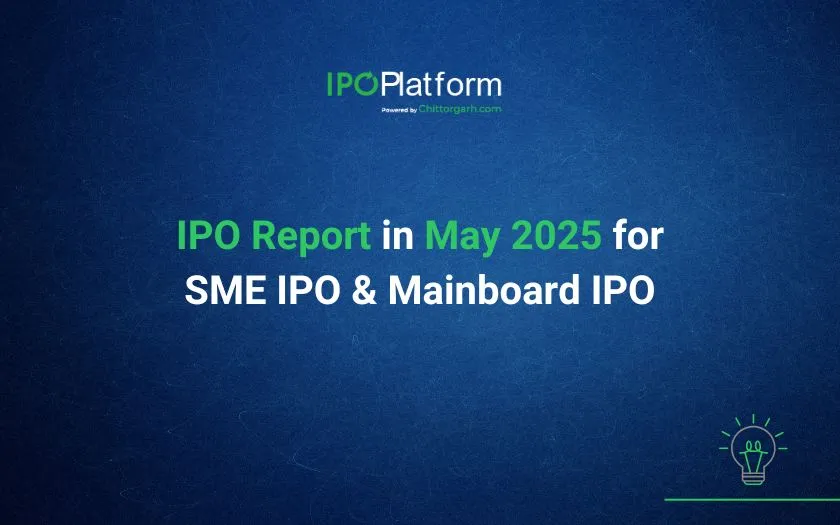
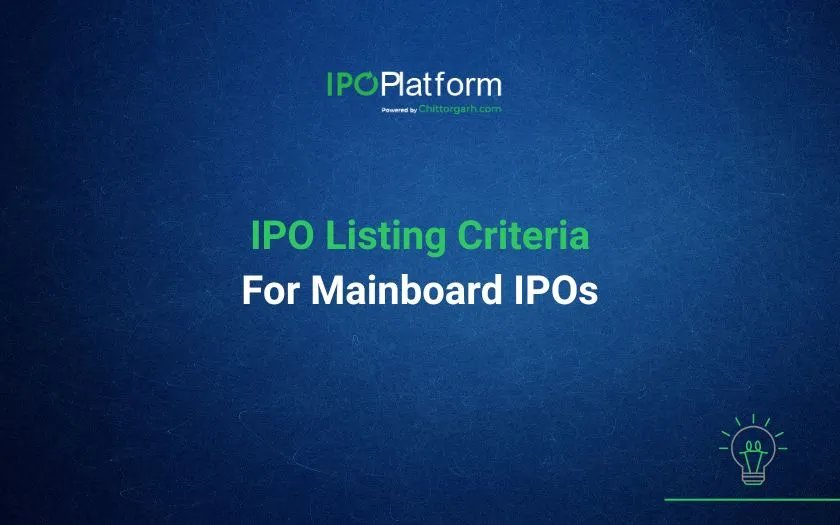
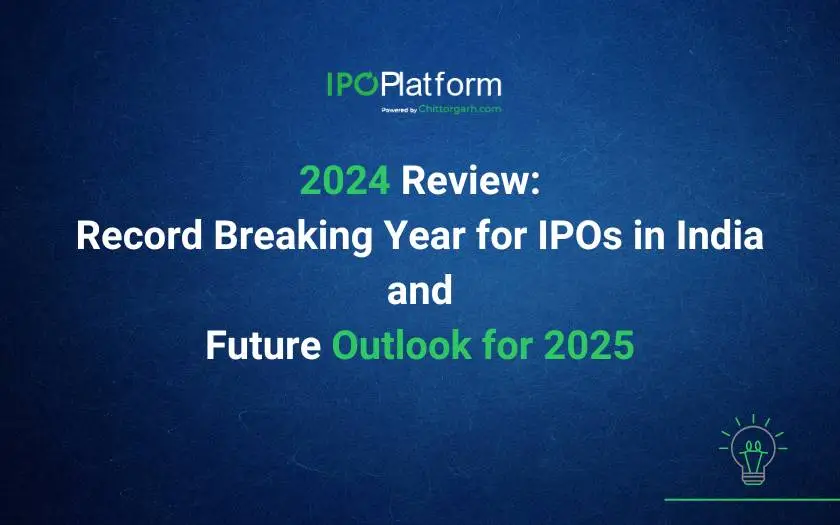
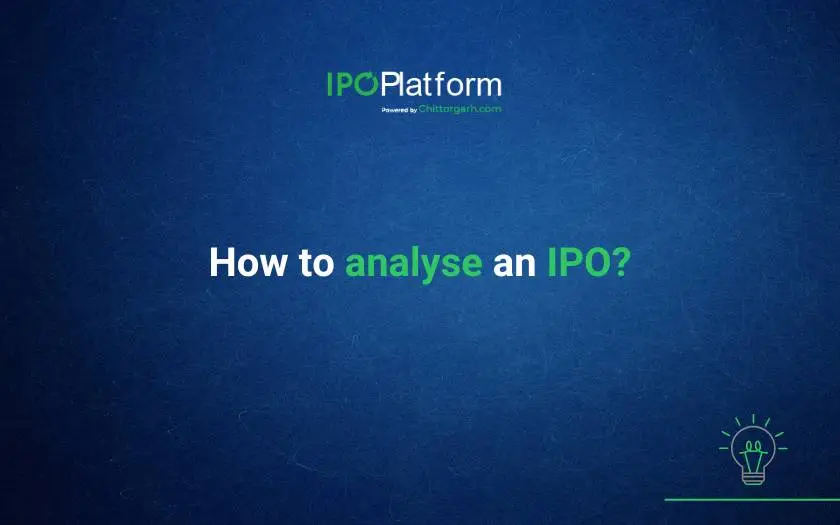
0 Comments